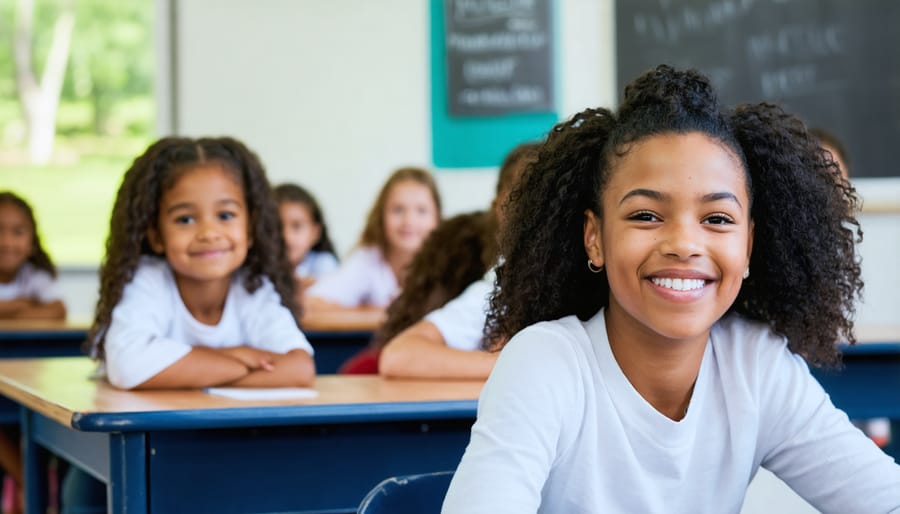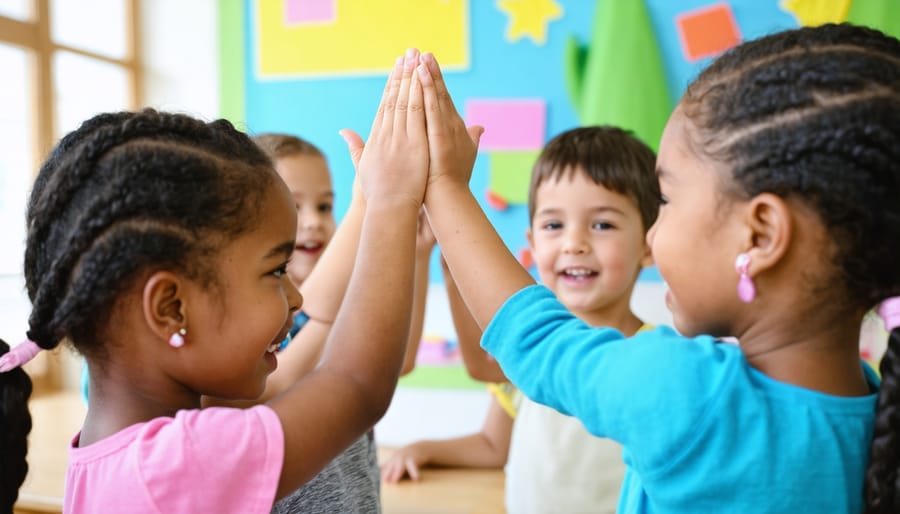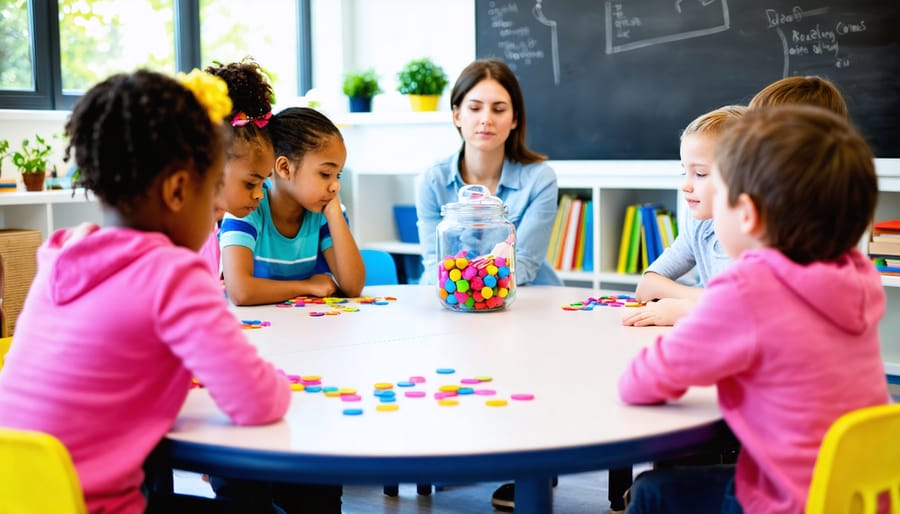Transform Your Classroom with These CBT Behavioral Techniques That Actually Work
Behavioral techniques from Cognitive Behavioral Therapy (CBT) transform how students manage their emotions, respond to challenges, and engage with learning—and they’re surprisingly simple to bring into your classroom! These evidence-based strategies help students recognize unhelpful thought patterns, develop coping skills, and build positive behaviors that stick.
Start by teaching students to identify their emotional triggers and physical responses through quick check-ins or mood tracking charts. Use positive reinforcement systems that reward effort and progress, not just outcomes—think sticker charts, praise notes, or classroom privileges that celebrate small wins. Practice behavioral experiments where students test out new responses to challenging situations, like deep breathing before a test or using positive self-talk during group work.
The beauty of CBT techniques lies in their flexibility. You can customize activities to match your students’ ages, needs, and learning styles, turning behavior management into engaging, interactive experiences. Role-playing scenarios, reflection journals, and goal-setting games make these strategies feel less like interventions and more like exciting tools students genuinely want to use.
Ready to bring these powerful techniques to life? Let’s explore practical, classroom-ready behavioral strategies that will help your students thrive emotionally and academically—no psychology degree required!
What Are Behavioral Techniques in CBT?
Think of Cognitive Behavioral Therapy (CBT) behavioral techniques as practical strategies that help change what people *do* to improve how they *feel*. While CBT started in clinical psychology, these techniques are incredibly valuable for your classroom because they focus on observable actions you can actually influence.
Here’s the simple foundation: Our behaviors and emotions are deeply connected. When students change their actions, their feelings and thoughts often follow. That’s where behavioral techniques come in—they’re specific, intentional activities designed to create positive change through action.
You’re probably already using versions of these techniques without realizing it! When you encourage a shy student to participate by starting with a small, manageable task, that’s behavioral activation. When you help an anxious student face a challenging situation gradually rather than avoiding it, that’s exposure therapy in action.
The beauty of behavioral techniques is their hands-on nature. Instead of just talking about problems, students *do* something different. They practice new behaviors, try alternative responses, and experience success firsthand. This makes these strategies perfect for classroom environments where engagement and active learning matter most.
These techniques aren’t about forcing behavioral compliance—they’re about giving students tools to navigate challenges, build confidence, and develop healthy habits. When delivered through interactive activities and customized to your students’ needs, behavioral techniques become powerful allies in creating a supportive, thriving classroom community.

Why Teachers Love Using CBT Behavioral Techniques
Let’s be real—teaching is incredibly rewarding, but it can also be exhausting when classroom behaviors pull focus from actual learning. That’s exactly why so many educators are turning to CBT behavioral techniques. These strategies aren’t just theory from a psychology textbook; they’re practical tools that make your daily teaching life smoother and more enjoyable.
First off, you’ll notice fewer disruptions. When students learn to recognize their own behavioral patterns and triggers, they become more self-aware and self-regulating. That means less time playing referee and more time actually teaching! You can say goodbye to constantly redirecting the same behaviors because students develop the skills to redirect themselves.
The impact on student focus is remarkable too. CBT techniques help kids understand the connection between their thoughts, feelings, and actions. When they grasp this, they’re better equipped to manage distractions and stay on task. You’ll see hands going up more often, assignment completion rates climbing, and genuine engagement with your lessons.
Here’s the best part—these techniques actually reduce *your* stress levels. When your classroom runs more smoothly, you go home with more energy and less frustration. You’re not dealing with the same behavioral issues day after day because you’re addressing the root causes, not just the symptoms.
And the learning outcomes? They speak for themselves. Students who can manage their behaviors and emotions are students who can learn. You’ll see improvements in academic performance, participation, and even social interactions among peers. These techniques create a positive cycle where better behavior leads to better learning, which reinforces better behavior. It’s a win-win that makes teaching feel fun again!
Top CBT Behavioral Techniques You Can Use Tomorrow
Positive Reinforcement: Catch Them Being Good
One of the most powerful tools in your classroom management toolkit is catching students doing something right! This approach, central to CBT behavioral strategies, focuses on reinforcing the behaviors you *want* to see rather than only responding to problems.
The key is to be specific with your praise. Instead of a generic “good job,” try “I love how you raised your hand and waited patiently to share your answer!” This tells students exactly what they did well and encourages them to repeat that behavior.
Rewards don’t have to be complicated or expensive. Consider creating a point system where students earn privileges like extra computer time, being line leader, or choosing a class game. Speaking of games, classroom review games are fantastic reinforcement tools! When students know they’ll play an exciting review game after completing their work or demonstrating good behavior, motivation soars.
Try implementing a digital reward system where correct answers and positive behaviors earn points that unlock fun content. You can customize these systems to match your classroom’s unique needs and your students’ interests. The element of friendly competition and immediate feedback makes learning feel less like work and more like play.
Remember, consistency is crucial. The more regularly you apply positive reinforcement techniques, the more effective they become. Start small—choose one or two behaviors to focus on—and watch as your classroom culture transforms into a more positive, engaged learning environment!

Behavioral Activation: Get Students Moving and Engaged
Getting students up and moving isn’t just about burning energy—it’s a powerful behavioral technique that transforms passive learners into active participants! Behavioral activation helps combat the “slump” that happens when students sit too long, and it’s easier to implement than you might think.
Start with quick movement breaks every 20-30 minutes. Try “stand and stretch” transitions between activities, or incorporate walking discussions where students move around the room while sharing ideas with partners. These small shifts make a big difference in attention spans and mood.
Interactive activities work wonders too! Use games that require physical participation—like gallery walks where students rotate through stations, or team challenges that get everyone on their feet. The key is making movement purposeful and connected to your lesson objectives.
Team-building games are perfect for combining movement with social-emotional learning. Activities like “human knot” or collaborative problem-solving challenges build classroom community while keeping bodies and minds engaged. Remember, these student engagement strategies work best when customized to your students’ ages and interests.
The beauty of behavioral activation is its flexibility—you can adapt any lesson to include movement. Even simple techniques like having students physically sort themselves by opinion or move to different corners for group work can re-energize your classroom instantly!
Modeling: Show, Don’t Just Tell
Think of yourself as your students’ favorite movie star—they’re watching your every move! Modeling is one of the most powerful tools in your teaching toolkit because kids learn best by watching what you do, not just hearing what you say.
When you want students to solve problems calmly, demonstrate exactly how you’d tackle a tricky situation. Talk through your thinking process out loud: “Hmm, this math problem looks tough, but I’m going to take a deep breath and break it into smaller steps.” Show them how you handle mistakes with a positive attitude: “Oops, I spelled that wrong! No worries—I’ll just fix it and keep going.”
Make it visual and engaging! Act out scenarios like asking for help politely, managing frustration, or working through disagreements. You can even make it fun by exaggerating certain behaviors to highlight the difference between helpful and unhelpful responses.
The beauty of modeling is that it’s customizable to any situation. Whether you’re demonstrating active listening, organized study habits, or respectful communication, your students absorb these behaviors naturally. Remember, you’re not just telling them how to behave—you’re showing them they can do it too!
Behavior Tracking and Self-Monitoring
One of the most powerful tools in your classroom toolkit is helping students become aware of their own behaviors and progress. Self-monitoring transforms abstract concepts like “being a good listener” into concrete, trackable actions that students can see and celebrate!
Start simple with visual tracking systems. Behavior charts with stickers or stamps let younger students instantly see their accomplishments, while older students might prefer digital checklists or point-tracking apps. The key is making it visual and immediate—students need to see their progress happening in real-time.
Create customized tracking tools that match your classroom vibe. Use colorful charts for daily goals like “raised my hand before speaking” or “completed homework on time.” Game-style scoreboards work brilliantly too—students can level up, earn badges, or unlock rewards as they consistently meet their behavior targets.
The magic happens when students take ownership. Let them choose what behaviors to track and design their own monitoring systems. Maybe it’s a rocket ship climbing toward the stars or a garden that blooms with each positive choice. When students personalize their trackers, they’re more invested in the outcome.
Remember to keep check-ins brief and positive. A quick morning review of yesterday’s progress and setting today’s intention takes just minutes but builds powerful self-awareness habits that last a lifetime!
Exposure and Gradual Practice
Think of exposure and gradual practice as building a confidence staircase for your students! When a task feels overwhelming—whether it’s presenting in front of the class, tackling multi-step math problems, or participating in group discussions—breaking it down into bite-sized pieces makes all the difference.
Start small and celebrate each tiny victory. If a student struggles with public speaking, begin with sharing one sentence with a partner, then progress to speaking in small groups, and eventually work up to class presentations. The key is repetition with support at each level before moving forward.
This technique works wonderfully because students experience success at every stage, building genuine confidence rather than being thrown into the deep end. You’re essentially creating a safe practice environment where mistakes become learning opportunities, not scary obstacles.
Make it fun by turning practice into games or friendly challenges! Use point systems, progress charts, or team activities to keep motivation high. Remember, the goal isn’t speed—it’s steady progress. Some students will climb those stairs quickly, while others need more time at each step, and that’s perfectly okay! Customize the pace to match each learner’s comfort zone while gently encouraging forward movement.
Response Prevention: Breaking Bad Habits
Response prevention is all about catching those unwanted behaviors before they become automatic patterns! Think of it as creating a “pause button” for your students between impulse and action.
Start by identifying the specific behaviors you want to redirect. When a student reaches for their phone during instruction or begins to argue, step in with a planned alternative. The key is interrupting the pattern early and offering a positive substitute action.
Try the “Stop and Swap” technique: when you notice a negative behavior starting, guide students to immediately switch to a predetermined positive action. For example, if a student typically responds to frustration by shutting down, teach them to take three deep breaths and ask for help instead.
Make it interactive! Create visual cue cards students can flip when they feel the urge toward a negative behavior. The physical action of flipping the card interrupts the pattern while the new prompt redirects their energy positively.
Pair response prevention with conflict resolution games to practice these skills in low-stakes situations. Students learn to recognize their triggers and develop healthier responses they can customize to their own needs.
Celebrate every successful redirection—these small wins build powerful new habits over time!
Making It Fun: Gamifying CBT Techniques in Your Classroom
Want to supercharge your CBT behavioral techniques? Turn them into games! Students engage more deeply when learning feels like play, and behavioral strategies work best when kids are excited to participate.
Start with simple point systems tied to behavioral goals. Create teams that earn rewards for demonstrating target behaviors like staying on task or using positive self-talk. You can transform any behavioral technique into a friendly competition—students love seeing their progress tracked on colorful charts or digital leaderboards.
Try “behavior bingo” where students mark off squares as they practice specific coping skills or challenge negative thoughts throughout the day. Or set up a “mood meter relay” where teams race to identify and act out appropriate responses to different scenarios. These interactive activities naturally incorporate exposure hierarchies and behavioral activation without feeling clinical.
Review games are perfect vessels for CBT techniques. When students answer questions to earn points, build in bonus rounds for sharing times they used a coping strategy or reframed a negative thought. Classroom management games seamlessly blend academic review with behavioral practice.
The beauty of gamification? Customization! Adjust difficulty levels, change themes to match student interests, and modify rules to target specific behavioral goals. Use templates that let you quickly create new games, keeping the excitement fresh while consistently reinforcing positive behaviors. When students are having fun, they’re actively practicing skills that will benefit them long after the game ends.

Quick Tips for Getting Started
Ready to bring CBT techniques into your classroom? Start small and celebrate those early wins! Pick just one or two strategies that resonate with you—maybe a simple thought-tracking activity or a quick positive reinforcement game. There’s no need to overhaul everything at once.
Customize these techniques to fit your unique classroom vibe. If your students love competition, turn behavioral check-ins into friendly challenges. If they’re creative types, let them design their own reward charts or tracking journals. The magic happens when you make these tools feel like they’re *theirs*.
Build momentum by establishing consistent routines. Maybe you start each Monday with a goal-setting activity or end Fridays with reflection time. When students see patterns and know what to expect, they engage more naturally.
Don’t forget to model the behavior you’re teaching! Share your own examples of reframing negative thoughts or setting achievable goals. Your authenticity makes these techniques feel real and doable.
Most importantly, give yourself grace. Not every strategy will click immediately, and that’s perfectly okay. Adjust, experiment, and have fun discovering what works best for your crew. You’ve got this!
You’ve got this! Transforming your classroom doesn’t require a psychology degree or complicated interventions. The beautiful thing about CBT behavioral techniques is their simplicity and flexibility. Whether you’re using positive reinforcement with a reward system, helping students challenge negative thoughts through reframing exercises, or creating behavioral contracts together, these strategies genuinely work.
Start small—pick one technique that resonates with you and try it for a week. Notice the shifts in your classroom energy. Students feel more empowered when they understand their behaviors and emotions. You’re not just managing a classroom; you’re teaching life skills that extend far beyond school walls.
Remember, every classroom is unique, so customize these approaches to fit your students’ needs and your teaching style. Maybe turn behavior tracking into a game, or create fun visual reminders that celebrate progress. The key is consistency and genuine enthusiasm.
These evidence-based strategies have helped countless educators build more positive, engaging learning environments. Your commitment to trying new approaches shows you’re already on the path to creating meaningful change. Trust the process, celebrate small wins, and watch your classroom transform into the supportive, dynamic space you’ve envisioned!


